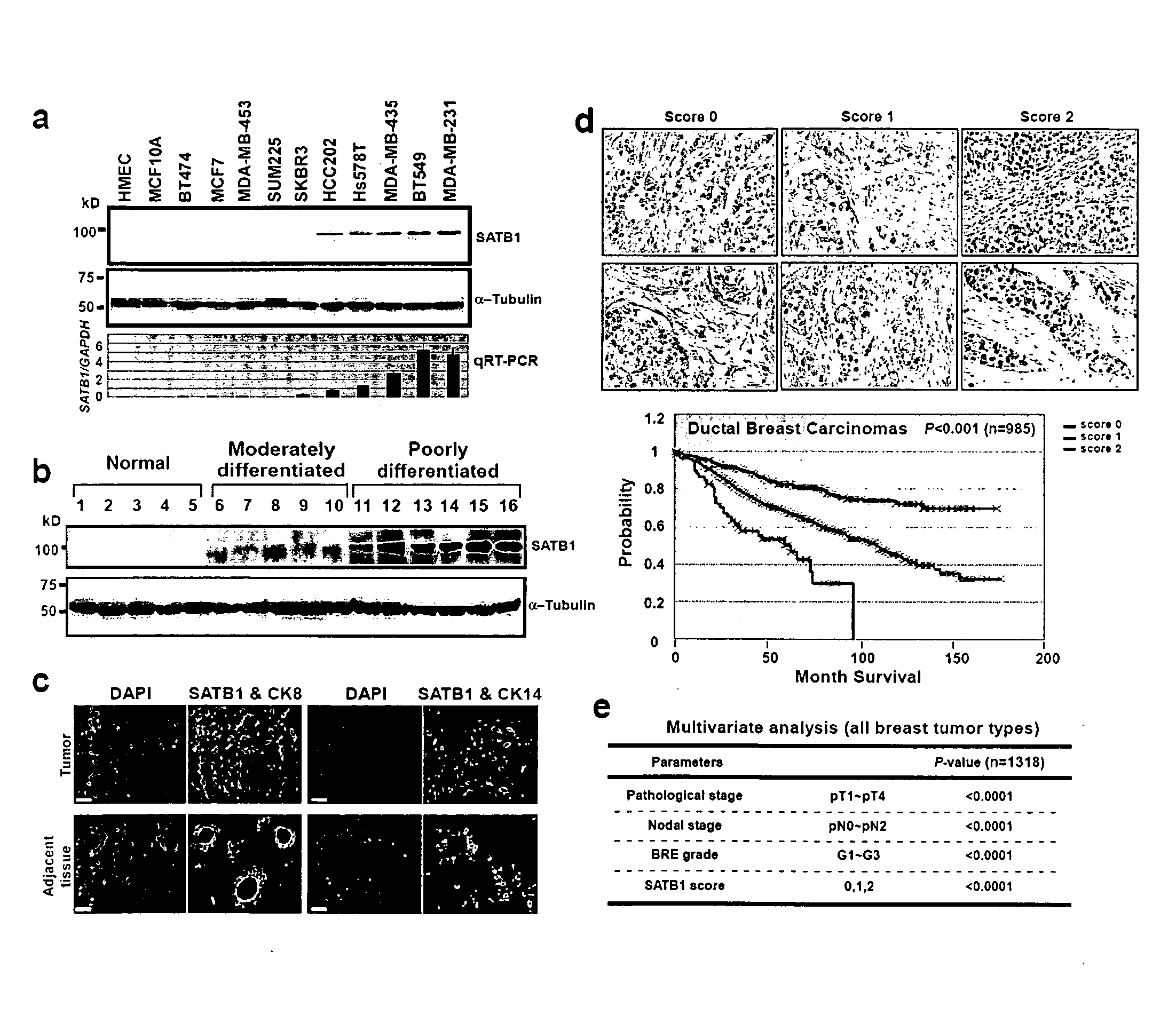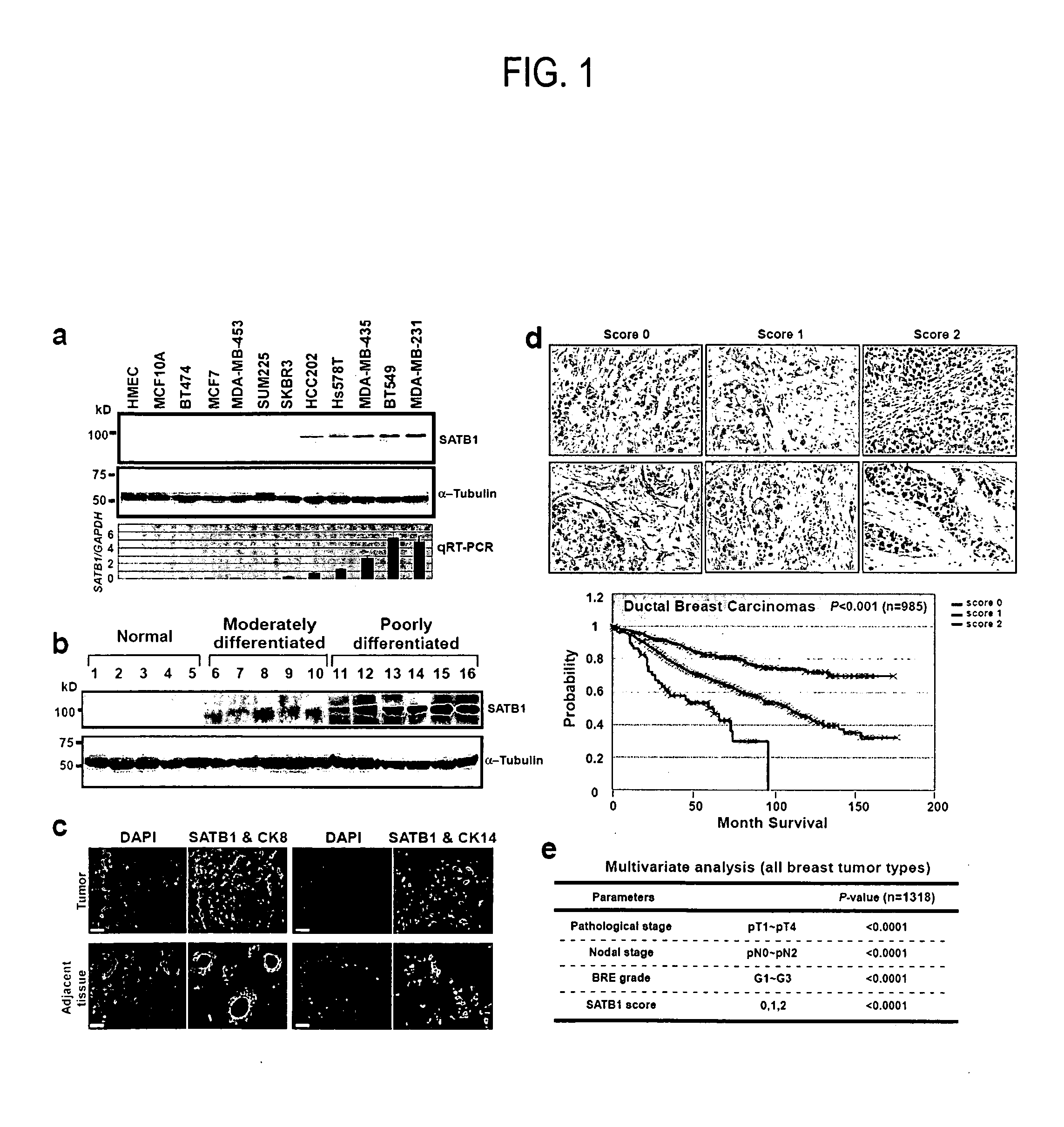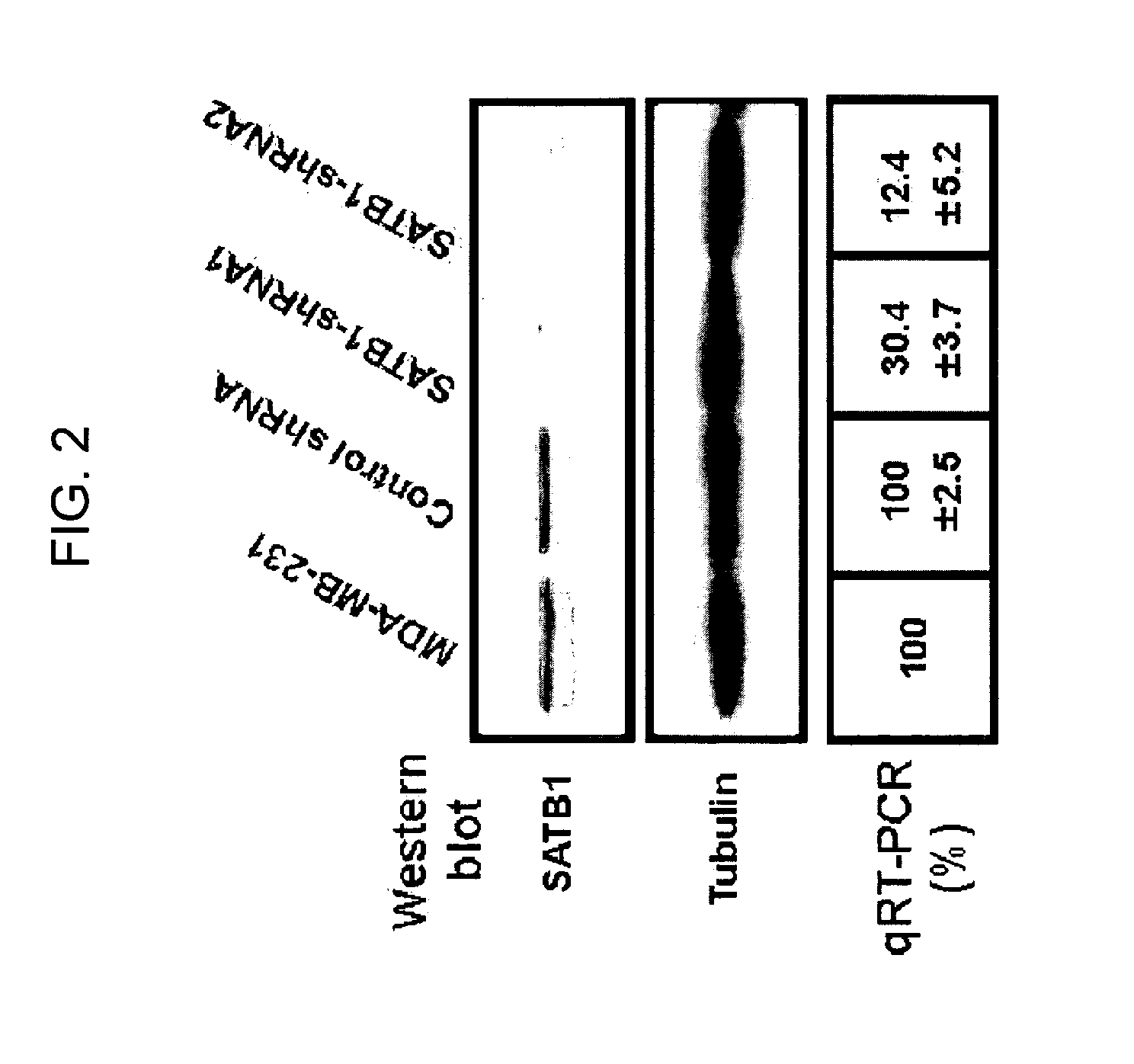Satb1: a determinant of morphogenesis and tumor metastasis
a tumor metastasis and morphogenesis technology, applied in the field of cancer markers and therapeutics, can solve the problems of tumor metastasis and death in cancer patients, and achieve the effect of reliable marker for diagnosis and prognosis of cancer and high statistical significan
- Summary
- Abstract
- Description
- Claims
- Application Information
AI Technical Summary
Benefits of technology
Problems solved by technology
Method used
Image
Examples
example 1
SATB1 is Expressed in Highly Aggressive Cancer Cell Lines and Advanced Stages of Primary Tumor Samples, But not in Benign and Normal Samples
[0133]SATB1 expression levels was examined in 24 breast epithelial cell lines, including normal human mammary epithelial cells (HMEC) and 5 immortalized derivatives, 13 non-metastatic and 5 metastatic cancer cell lines. Both SATB1 mRNA and protein were detected only in metastatic cancer cell lines, correlating SATB1 expression with aggressive tumor phenotypes (results from representative cell lines shown in FIG. 1a). SATB2, a close homolog of SATB1, was expressed in both malignant and non-malignant cell lines (data not shown.
[0134]As shown in Table 1 and exemplified in FIG. 1B, SATB1 expression levels were examined in 28 human primary breast tumor samples, including moderately (12 cases) or poorly differentiated (16 cases) ductal carcinomas, and 10 adjacent tissues as controls. The pathological analyses for these tumor samples were made prior to...
example 2
Construction of SATB1 Knocked-Down System
[0141]It was then tested whether suppression of SATB1 level in the highly metastatic MDA-MB-231 cells would affect their aggressiveness. Short hairpin-interfering RNAs (shRNA) were successfully designed to target SATB1 expression and are identified herein as SEQ ID NOs: 4-7. It was demonstrated that these shRNAs could suppress SATB1 expression in MDA-MB-231 cells by establishing cell clones stably transfected with pSUPER-puro (gift of Dr. Mina Bissell) bearing a DNA segment specifying such shRNA sequences (FIG. 2). Two representative clones in which shRNAs drastically reduced the expression of SATB1 in protein and RNA level as well (FIG. 2) are shown. An shRNA, whose sequence did not match any known human gene, was also introduced into MDA-MB-231 cells. This control shRNA did not reduce SATB1 expression.
[0142]Two shRNAs were designed according to SATB1 sequence (GenBank Accession No. NM—002971, hereby incorporated by reference) using siRNA Ta...
example 3
Depletion of SATB1 from Aggressive Breast Cancer Cells by shRNA 1) Reduced the Proliferation Rate, 2) Changed Cell Morphology, 3) Reversed the Invasive to Non-Invasive Phenotype and 4) LED to Loss of Anchorage-Independent Growth
[0145]Next we examined the effects of reduction of SATB1 expression in MDA-MB-231 cells in vitro on both the 2D (plastic) and on 3D (Matrigel) culture system, compared with the host MDA-MB-231 cells or those harboring control shRNA.
[0146]Reduction of cell proliferation rate. We examined whether loss of SATB1 expression affects cancer cell proliferation by culturing SATB1-shRNA1 MDA and SATB1-shRNA2 MDA cells on plastic dish {two-dimensional (2D) culture} or on a reconstituted basement membrane derived from Engelbreth-Holm-Swarm Tumor (Matrigel™) {three-dimensional (3D) culture}. The proliferation rates of SATB1-shRNA1 and SATB1-shRNA2 MDA cells were significantly reduced in both 2D and 3D cultures up to 11 days in culture, compared with their parental cell li...
PUM
| Property | Measurement | Unit |
|---|---|---|
| Nucleic acid sequence | aaaaa | aaaaa |
| Antisense | aaaaa | aaaaa |
| Level | aaaaa | aaaaa |
Abstract
Description
Claims
Application Information
 Login to View More
Login to View More - R&D
- Intellectual Property
- Life Sciences
- Materials
- Tech Scout
- Unparalleled Data Quality
- Higher Quality Content
- 60% Fewer Hallucinations
Browse by: Latest US Patents, China's latest patents, Technical Efficacy Thesaurus, Application Domain, Technology Topic, Popular Technical Reports.
© 2025 PatSnap. All rights reserved.Legal|Privacy policy|Modern Slavery Act Transparency Statement|Sitemap|About US| Contact US: help@patsnap.com



